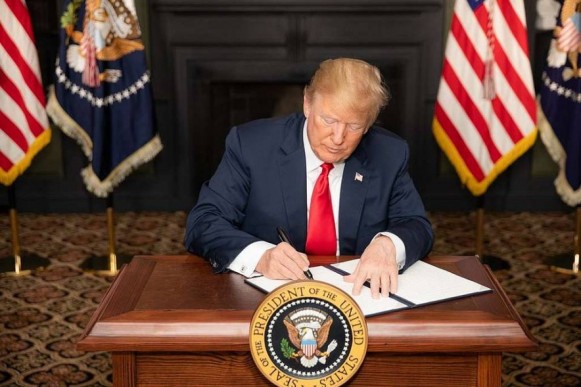
Institutional Investment in Crypto Markets: Is the Cavalry Really on its Way?
Jan 4, 2019, 1:45PM by Chris Madill
by Chris Madill
Crypto-pundits have been calling in the cavalry throughout 2018, but institutional investors are yet to arrive. Will they ever get here?
With 2018 at a close, many market analysts are now reneging their propitious price predictions for the EOY (End-Of-Year) values of digital assets. Twelve months ago, these crypto-pundits were predicting digital assets would explode over the course of 2018, and the succeeding bear market took many by surprise. Although markets are seeing a slight recovery in the final month of the year, it is unlikely to see Bitcoin and other digital assets recover even half of their All-Time-High (ATH) values at the outset of 2019, let alone any increase in value for the year.
One of the big driving forces behind the optimistic projections of early 2018 was the assumption that institutional investment in crypto was just around the corner. Wall Street was buzzing throughout 2018 with thin or unconfirmed reports of big firms with ambitious plans to start trading crypto. Still, the bear market has been steadily pushing values down, and the big institutional investors have yet to take the market by the horns.
The question is: where are these institutional investors, and when, if ever, will they begin pushing crypto values up?
An Expert Analysis Of The Crypto Market's Direction
Mike Novogratz, CEO of Galaxy Digital Capital Management LP, is a poster child for big-market traders who turned crypto. Novogratz cut his teeth in the financial world with Goldman Sachs during the early to mid-nineties, eventually becoming a partner in Goldman in 1998. After his career with Goldman, Novogratz joined Fortress Investments, where he acted as a hedge-fund manager for the firm. In 2007, Forbes magazine listed Novogratz as a bonafide Billionaire.
Novogratz turned to crypto-investing early, reportedly earning $250 million in profits by 2015-2016, after which he founded the digital asset investment firm “Galaxy Digital Capital Management”, an investment firm that aims to “...institutionalize the space, and promote the growth and advancement of the underlying ecosystem and technology behind digital assets and blockchain.”
As far as “expertise” goes, there are few people on this earth that could contend with Mike Novogratz’s grasp of the crypto market — a fact that has earned Novogratz the moniker “The Bitcoin King”. He has held a pivotal role in garnering institutional support for the crypto industry and is viewed as an authority of both traditional and digital asset market analysis worldwide.
Despite his level of expertise, Novogratz has been far from prophetic in his projections for the future of crypto values. During the fever of the 2017 crypto bull-run, Novogratz predicted a whopping $40,000 2018 EOY value for Bitcoin during an interview with CNBC’s “FastMoney”. Novogratz has dropped his predicted EOY BTC value numerous times since, settling most recently on the “$3000 - $6000” range during an interview on December 18th with BloombergTV.
Novogratz is just one of many bullish financial experts who misinterpreted the direction of the crypto market in early 2018, and in all fairness, the nascent crypto market is not an easy thing to understand. The market is new, highly volatile, and much more susceptible to “hype” based fluctuations than more established asset classes found in traditional financial markets. Novogratz’s latest analysis of the market in the above video shows a much more measured and informed prediction for the value of Bitcoin than he has ever made previously, yet he remains extremely bullish for 2019.
Once again citing institutional investment as a primary reason for his bull position, Novogratz hints that custody projects like Fidelity and Bakkt are gearing up to bring in a long line of institutional investors who are eagerly awaiting their chance to enter the crypto market, and after a year of running his crypto investment firm, there is more reason than ever to believe that Novogratz is on the right track,
I’ve always said we needed institutional custody, and in January, Fidelity opens up their shop. ...[Also] In January, Bakkt, owned by the New York Stock Exchange opens up their shop. When I talk to those groups, they’ve got customers lined-up to start, and so I think by February, March, April, you’re going to see institutions dipping their toes and entering the [crypto] space. / Mike Novogratz, BloombergTv Interview, December 18, 2018
As Novogratz points out, Fidelity and Bakkt are likely game-changers for institutional investors looking to get into crypto in 2019, but there is an even more exciting picture beginning to take shape right now in 2018.
OTC Trading: Crypto's Back Door
Over-The-Counter (OTC) - or “off-exchange” trading - is a term used to describe when assets are traded directly between two parties (sometimes with an intermediate broker involved), without the use of an exchange. This type of trading is most often used by institutional investors, high net-worth individuals (Whales) and crypto-miners. OTC trading allows the involved parties to avoid the volatility associated with digital assets, and also “hides” the increase in supply or demand from the prying eyes of the rest of the market, insulating the price of the assets from large volume transactions.
In the case of crypto, some reports are proposing that institutional investors and Whales are already gobbling up digital assets in 2018 — without affecting prices — in an attempt to accumulate as much digital wealth as possible before the market turns bullish in 2019.
These reports are using the power of transparent blockchains to find large volume transactions, showing that top wallet addresses are undeniably accumulating digital assets. The speculation is that these top accumulators are either Whales or institutional investors who are using the back door of the crypto market to build digital wealth before the next bull-run.
In this first example from October 26th, 2018, published on CaptainAltcoin.com, we see a compelling case made by the author showing 5 top Bitcoin wallets that have accumulated a mind-boggling 133,000 BTC during the month of October.
The total accumulated by these 5 wallets is more than 133 thousand BTC [!] an amount equivalent to the cold wallet of Bitfinex (133 my BTC), superior to the cold wallet of Binance (129 thousand BTC) and Bittrex (107 thousand BTC); this according to the portal bitinfocharts. / Torsten Hartmann, CaptainAltcoin.com
The author of the report speculates these top wallets are associated, and the only logical conclusion would be that financial institutions are trying to get as much BTC as they can before prices start to increase. While the author's conclusion is only speculation, the research he has conducted is sound, and there are few individuals capable of purchasing this much BTC, so it is likely that these wallets are either owned by an institution or by a pool of whales.
Even more compelling information comes from Diar, a “Weekly Institutional Publication and Data Resource Analyzing Digital Currency & Assets”. The publication provides well-researched data highlighting evidence that the big-players in crypto are buying now more than ever. The first report, published in November 2018, shows that ETH Whales are buying more ETH during the end of 2018 than ever before.
Active trading whales have accumulated more in 2018 than any period in the Ethereum's history despite the ongoing bear market. November closed with whales sitting on a whopping 80% increase versus the start of the year. The tally now for the top Ethereum actively trading addresses is a cool $2.3Bn, holding nearly a fifth of Ethereum's circulating supply. But on the balance, big players have come and gone with overall whales holding as much as they did during peak / Diar - Volume 2 - Issue 47
The second report (published in mid-December 2018) provides data showing institutional investors are likely pursuing OTC trading at an exponential rate, further supporting the theory that OTC avenues are providing eager institutional investors a way into the crypto market before the predicted surge of institutional interest in 2019 via Fidelity and Bakkt,
All major exchanges in the US now offer OTC services, with many other players addressing the market solely. Max Keidun, CEO of Peer-to-Peer exchange HodlHodl, whom also have an OTC Desk, tells Diar that large order requests have grown exponentially in 2018 doubling month-on-month. But it hasn't come without difficulties. "It's quite harder than usual to find a seller at current prices" Mr Keidun said. / Diar - Volume 2 - Issue 49
In fact, there are many reports looking at OTC trading metrics within the crypto market throughout 2018, but the depth and quality of the information found within these reports is improving dramatically, as well as the frequency of new information. These reports provide compelling evidence of an inflow of institutional investment and big money through the back door of the crypto market, and are a testament to the development and evolution of the infrastructure available to big traders. Combine the increase in OTC trading and the improvement of market infrastructure with the expert analysis from individuals like Mike Novogratz, and you can see why many expert positions remain as bullish as ever despite the current bear market.
Disclaimer: information contained herein is provided without considering your personal circumstances, therefore should not be construed as financial advice, investment recommendation or an offer of, or solicitation for, any transactions in cryptocurrencies.

















